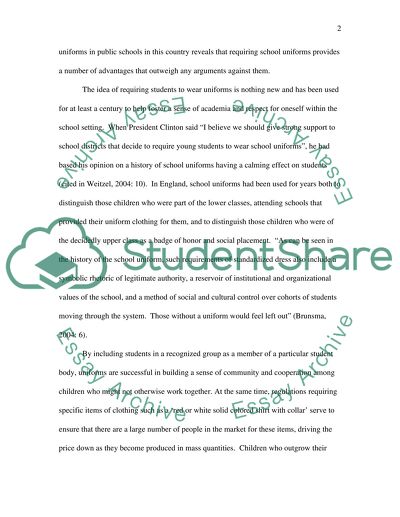Cite this document
(“School Uniforms: A Good or Bad Idea Essay Example | Topics and Well Written Essays - 1500 words”, n.d.)
Retrieved from https://studentshare.org/sociology/1422210-school-uniforms-a-good-or-bad-idea
Retrieved from https://studentshare.org/sociology/1422210-school-uniforms-a-good-or-bad-idea
(School Uniforms: A Good or Bad Idea Essay Example | Topics and Well Written Essays - 1500 Words)
https://studentshare.org/sociology/1422210-school-uniforms-a-good-or-bad-idea.
https://studentshare.org/sociology/1422210-school-uniforms-a-good-or-bad-idea.
“School Uniforms: A Good or Bad Idea Essay Example | Topics and Well Written Essays - 1500 Words”, n.d. https://studentshare.org/sociology/1422210-school-uniforms-a-good-or-bad-idea.


